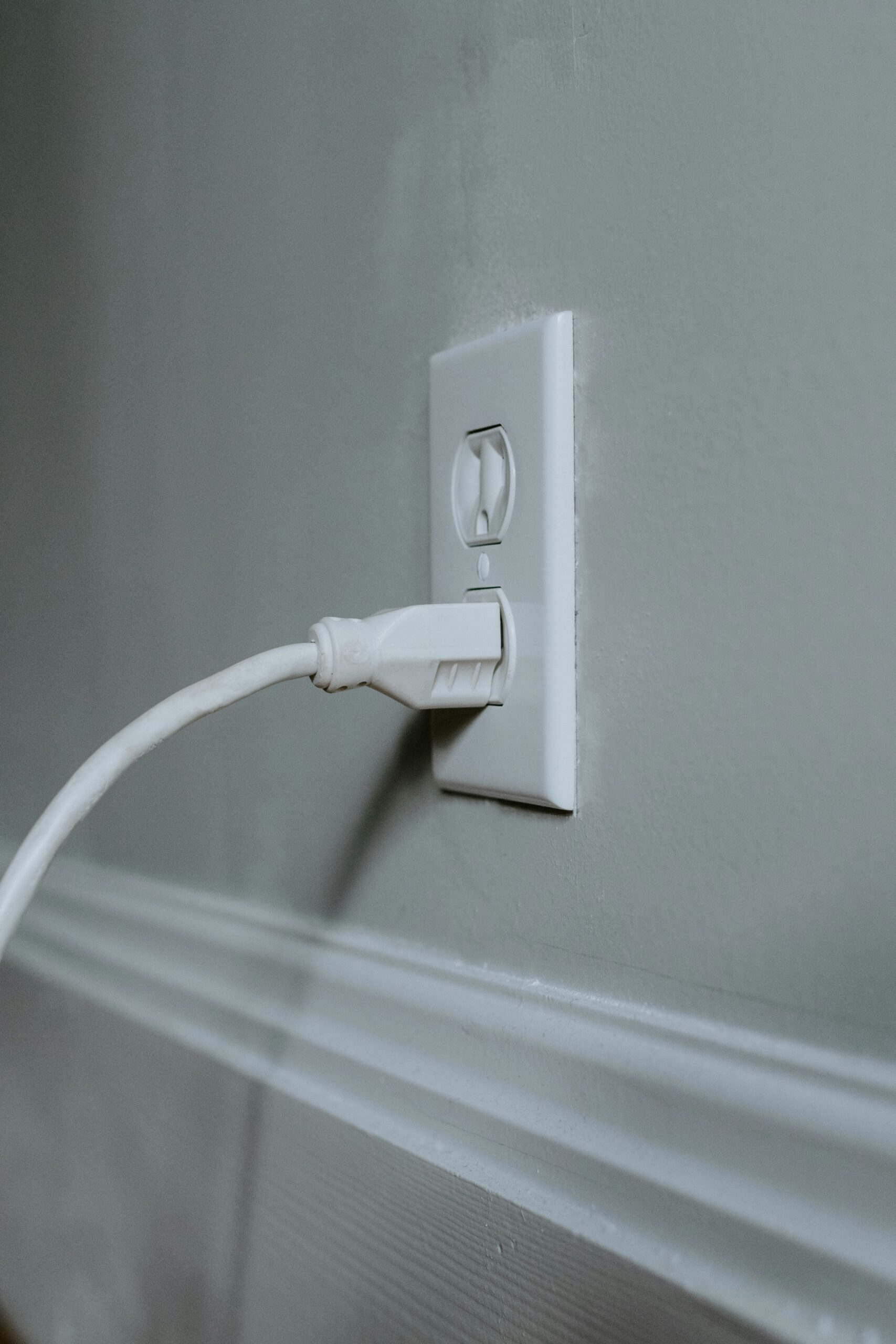Have you ever wondered how a home power backup system works? In this article, we will explore the intricacies of these systems and provide a clear understanding of their functionality. From the moment a power outage occurs, to the seamless transition of power supply, let’s discover the fascinating process behind keeping your home powered when the lights go out. So, sit back, relax, and prepare to learn how a home power backup system can provide you with peace of mind during unexpected outages.
Understanding the Basics of Home Power Backup Systems
What is a home power backup system?
A home power backup system, as the name suggests, is a system designed to provide electricity to your home when the main power supply is interrupted. It acts as a contingency plan, ensuring that you have a backup source of electricity to keep your essential appliances and devices running during power outages. These systems come in different types and sizes, offering various capabilities to meet your specific needs.
Why are they important?
Power outages can occur due to various reasons, such as severe weather conditions, equipment failures, or maintenance work. During these situations, having a home power backup system is crucial to maintain the functionality of your home. It ensures that you have access to electricity for essential purposes, such as powering medical devices, refrigeration, heating or cooling systems, and communication devices. Additionally, a power backup system provides peace of mind, knowing that you won’t be left in the dark during unexpected outages.
Types of Home Power Backup Systems
Standby Generators
Standby generators are permanently installed outside your home and are connected to your electrical system. They are powered by a fuel source, such as natural gas or propane, and start automatically when the main power supply is disrupted. Standby generators are capable of supplying electricity to your entire home or selected circuits, depending on their size and power capacity. They provide seamless and uninterrupted power during outages and require professional installation.
Portable Generators
Portable generators are versatile and can be moved around to different locations as needed. They run on gasoline or diesel fuel and need to be manually started when power is lost. Portable generators typically have wheels and handles for easy transportation. They are suitable for powering specific appliances or a few essential circuits during outages. However, it is important to follow safety guidelines when using portable generators and avoid operating them indoors to prevent the risk of carbon monoxide poisoning.
Battery Backup Systems
Battery backup systems, also known as uninterruptible power supply (UPS), use batteries to store electrical energy. These systems are typically installed between the main power supply and critical electrical loads in your home. When power is interrupted, the battery backup system takes over and provides a continuous power supply for a limited period. Battery backup systems are commonly used for protecting sensitive electronic equipment, such as computers or home entertainment systems, from sudden power disruptions. They are compact, easy to install, and require regular battery maintenance.
Solar Inverters
Solar inverters are a type of home power backup system that utilizes solar energy to generate electricity and power your home. They work in conjunction with solar panel systems by converting the direct current (DC) electricity generated by the solar panels into alternating current (AC) electricity that can be used to power your home. Solar inverters can also store excess power in batteries for later use during periods of low sunlight or power outages. This renewable energy solution helps decrease reliance on the main power grid and reduce electricity costs over time.

Components of a Home Power Backup System
Generator or Inverter
The generator or inverter is the heart of any home power backup system. It is responsible for generating electricity or converting other sources of energy, such as solar power or stored battery energy, into usable electricity for your home.
Transfer Switch
A transfer switch is an essential component that ensures a smooth transition between the main power supply and the backup system. It detects when the main power fails and automatically switches the electrical load to the backup system. This prevents power surges and protects your appliances and electrical equipment from potential damage.
Electrical Panel
The electrical panel, also known as the breaker panel, is where the electrical circuits of your home are distributed and controlled. The backup system needs to be connected to the electrical panel to supply power to the necessary circuits or the entire home. It is important to consult with a licensed electrician to ensure proper installation and compatibility with your electrical panel.
Fuel Source
For standby generators and portable generators, a fuel source is required to generate electricity. Standby generators are typically connected to a natural gas line or propane tank, while portable generators rely on gasoline or diesel fuel. Solar inverters use sunlight as their primary source of energy, making them a renewable and environmentally friendly option. Battery backup systems rely on rechargeable batteries that can be charged from the main power source or renewable energy systems.
How Standby Generators Work
Activation during Power Failure
Standby generators are designed to automatically detect when the main power supply is disrupted. They are equipped with an automatic transfer switch that senses the loss of power and signals the standby generator to start running.
Transfer of Power
Once the standby generator is activated, it begins generating electricity. The transfer switch immediately disconnects the home from the main power supply and connects it to the standby generator. This ensures a seamless transition and prevents any interruption in the power supply to your home.
Return to Standby Mode
When the main power is restored, the transfer switch detects the return of power and switches the electrical load back to the main supply. The standby generator automatically shuts down and returns to standby mode, ready for the next power outage. This automated process ensures that you have uninterrupted power during outages without needing manual intervention.

How Portable Generators Work
Manual Start-up
Portable generators require manual start-up when the main power supply is lost. By pulling a cord or pushing a button, you initiate the engine and prime the generator for generating electricity.
Connection to Home Appliances
Once the portable generator is running, you can connect it to the required appliances or circuits in your home using extension cords or transfer switches. It is crucial to distribute the load properly and avoid overloading the generator’s capacity.
Monitoring of Power Usage
You need to carefully monitor the power consumption of your connected appliances to ensure that it stays within the generator’s power output capabilities. Additionally, it is important to follow safety precautions to prevent any electrical hazards and ensure the generator operates in a well-ventilated area to avoid carbon monoxide buildup.
How Battery Backup Systems Work
Charging from Main Source
Battery backup systems can be charged from the main power supply or renewable energy systems, such as solar panels or wind turbines. When the main power is available, the batteries are charged to their maximum capacity, ready to supply power during outages.
Supplying Power during Outages
When the main power is lost, the battery backup system automatically switches on and starts supplying power to the selected electrical circuits. The duration of power supply depends on the battery capacity and the power consumption of the connected appliances.
Recharging Process
After power is restored, the battery backup system begins recharging itself from the main power source or renewable energy systems. It is important to ensure that the batteries are properly maintained and periodically checked for any signs of deterioration to ensure their efficiency during future power outages.

How Solar Inverters Work
Conversion of Solar Energy to Electricity
Solar inverters are connected to solar panels, which capture sunlight and convert it into DC electricity. The solar inverter then converts this DC electricity into AC electricity, which can be used to power your home’s electrical circuits.
Storage of Excess Power
Solar inverters have the capability to store excess power generated by the solar panels in batteries. This stored energy can be used during periods of low sunlight, such as at night or during cloudy days, or during power outages when the main power supply is disrupted.
Supply of Power during Blackouts
In the event of a power outage, the solar inverter automatically switches to battery power, providing a continuous supply of electricity to your home. This allows you to maintain power to essential appliances and circuits, reducing reliance on the main power grid.
Safety Measures for Home Power Backup Systems
Proper Installation
It is crucial to have a professional electrician install and set up your home power backup system to ensure it is correctly integrated with your electrical system and meets all safety standards. Improper installation can result in electrical hazards or damage to your equipment.
Regular Maintenance
Routine maintenance is essential to keep your power backup system in optimal condition. This includes checking and testing the system regularly, inspecting fuel lines and connections, and ensuring that all components are clean, lubricated, and functioning properly.
Safe Fuel Storage
If your backup system relies on a fuel source, such as gasoline or propane, it is important to store it safely. Make sure the fuel is stored in a well-ventilated area away from any potential ignition sources. Furthermore, follow the manufacturer’s guidelines for fuel storage and handling to prevent accidents.
Protection from Weather Elements
Ensure that your power backup system and its components are protected from weather elements, such as rain, snow, or extreme temperatures. This can be achieved by installing weather-resistant enclosures or dedicated shelters to shield the system from potential damage.
Costs and Considerations for Home Power Backup Systems
Upfront Costs
The upfront costs of home power backup systems vary depending on the type, size, and brand of the system. Standby generators generally have higher upfront costs due to their installation requirements, while portable generators are often more affordable. Solar inverters require an initial investment in solar panel installation. Battery backup systems can have moderate upfront costs depending on their capacity and features.
Fuel and Maintenance Costs
Standby generators and portable generators, which rely on traditional fuel sources, incur ongoing fuel costs and maintenance expenses. This includes purchasing fuel and performing regular maintenance, such as oil changes and filter replacements. Solar inverters and battery backup systems have lower ongoing costs as they rely on renewable energy sources and have minimal maintenance requirements.
Size and Power Requirements
Determining the size and power requirements of your home power backup system is crucial. Assess the essential appliances and circuits you would like to power during outages and choose a system with adequate capacity to meet your needs. Oversizing or undersizing the system can result in inefficiencies or insufficient power supply.
Noise and Emissions
Consider the noise and emissions produced by the backup system, especially if you live in a residential neighborhood or have specific noise regulations. While standby generators and portable generators are generally louder and produce emissions, advancements in technology have led to quieter and more eco-friendly models. Solar inverters and battery backup systems are virtually silent and produce no emissions, making them an environmentally friendly choice.
Choosing the Right Home Power Backup System
Assessing Your Power Needs
Begin by assessing your power needs during outages. Identify the essential circuits and appliances you want to power, factoring in their power consumption, to determine the capacity required from your home power backup system.
Understanding Your Budget
Evaluate your budget and determine how much you are willing to invest in a home power backup system. Consider the upfront costs, ongoing fuel and maintenance costs, and the potential long-term savings from reduced reliance on the main power grid.
Evaluating Different Models and Brands
Research and compare different models and brands of home power backup systems. Look for reputable brands that offer reliable products with good customer reviews. Consider factors such as durability, efficiency, warranty, and additional features or capabilities that align with your specific requirements.
Professional Consultation
Consult with a licensed electrician or professional installer to assess your home’s electrical system and determine the most suitable home power backup system for your needs. They can provide expert advice, conduct a thorough evaluation of your home, and ensure proper installation and integration with your electrical panel.
By understanding the basics of home power backup systems, you can make an informed decision and choose the right system to ensure the continuity of electricity in your home during power outages. Whether it’s a standby generator, portable generator, battery backup system, or solar inverter, having a reliable backup power solution brings peace of mind and keeps your home functioning smoothly even when the main power supply fails.

